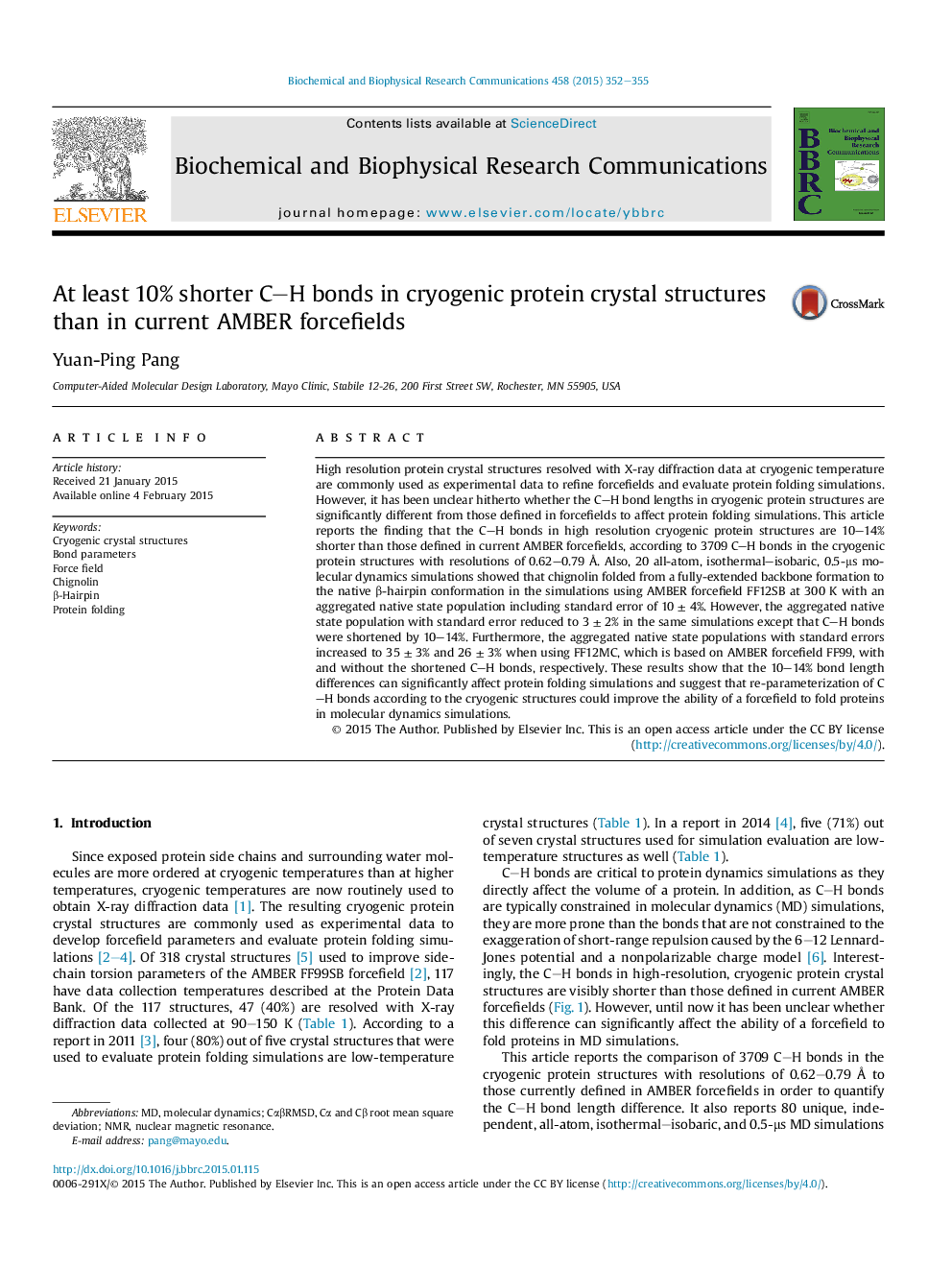| Article ID | Journal | Published Year | Pages | File Type |
|---|---|---|---|---|
| 10753298 | Biochemical and Biophysical Research Communications | 2015 | 4 Pages |
Abstract
High resolution protein crystal structures resolved with X-ray diffraction data at cryogenic temperature are commonly used as experimental data to refine forcefields and evaluate protein folding simulations. However, it has been unclear hitherto whether the C-H bond lengths in cryogenic protein structures are significantly different from those defined in forcefields to affect protein folding simulations. This article reports the finding that the C-H bonds in high resolution cryogenic protein structures are 10-14% shorter than those defined in current AMBER forcefields, according to 3709Â C-H bonds in the cryogenic protein structures with resolutions of 0.62-0.79Â Ã
. Also, 20 all-atom, isothermal-isobaric, 0.5-μs molecular dynamics simulations showed that chignolin folded from a fully-extended backbone formation to the native β-hairpin conformation in the simulations using AMBER forcefield FF12SB at 300 K with an aggregated native state population including standard error of 10 ± 4%. However, the aggregated native state population with standard error reduced to 3 ± 2% in the same simulations except that C-H bonds were shortened by 10-14%. Furthermore, the aggregated native state populations with standard errors increased to 35 ± 3% and 26 ± 3% when using FF12MC, which is based on AMBER forcefield FF99, with and without the shortened C-H bonds, respectively. These results show that the 10-14% bond length differences can significantly affect protein folding simulations and suggest that re-parameterization of C-H bonds according to the cryogenic structures could improve the ability of a forcefield to fold proteins in molecular dynamics simulations.
Keywords
Related Topics
Life Sciences
Biochemistry, Genetics and Molecular Biology
Biochemistry
Authors
Yuan-Ping Pang,
